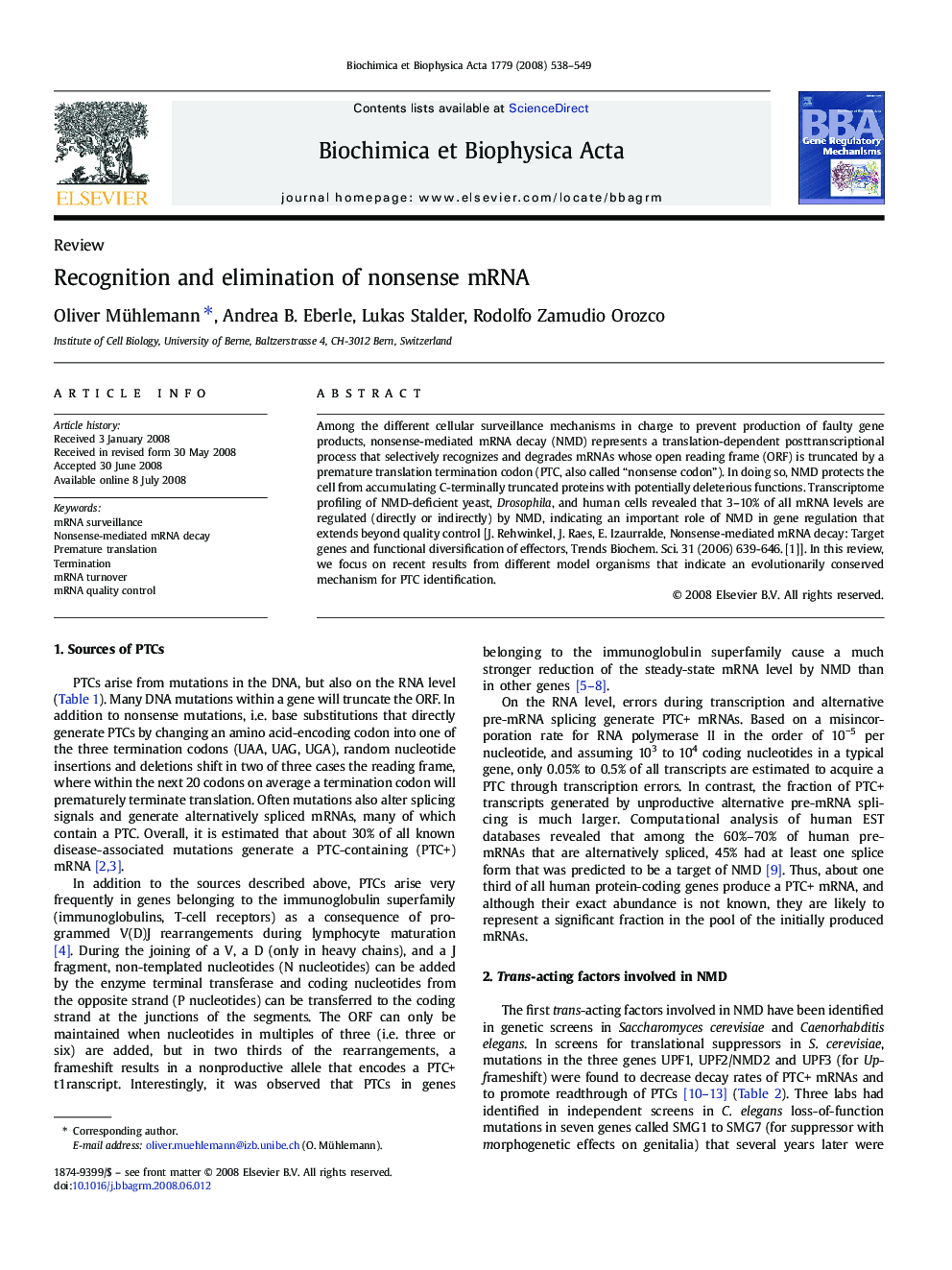| Article ID | Journal | Published Year | Pages | File Type |
|---|---|---|---|---|
| 1947051 | Biochimica et Biophysica Acta (BBA) - Gene Regulatory Mechanisms | 2008 | 12 Pages |
Among the different cellular surveillance mechanisms in charge to prevent production of faulty gene products, nonsense-mediated mRNA decay (NMD) represents a translation-dependent posttranscriptional process that selectively recognizes and degrades mRNAs whose open reading frame (ORF) is truncated by a premature translation termination codon (PTC, also called “nonsense codon”). In doing so, NMD protects the cell from accumulating C-terminally truncated proteins with potentially deleterious functions. Transcriptome profiling of NMD-deficient yeast, Drosophila, and human cells revealed that 3–10% of all mRNA levels are regulated (directly or indirectly) by NMD, indicating an important role of NMD in gene regulation that extends beyond quality control [J. Rehwinkel, J. Raes, E. Izaurralde, Nonsense-mediated mRNA decay: Target genes and functional diversification of effectors, Trends Biochem. Sci. 31 (2006) 639-646. [1]]. In this review, we focus on recent results from different model organisms that indicate an evolutionarily conserved mechanism for PTC identification.
